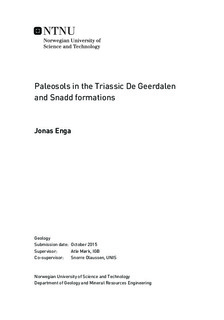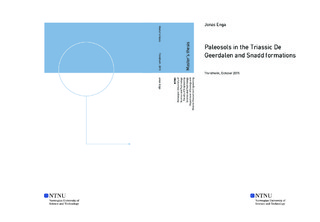| dc.description.abstract | Parts of the Late Triassic De Geerdalen Formation and the Middle to Late Triassic Snadd Formation have been investigated through facies analysis of outcrop and core data. The purpose has been to identify paleosols, relate them to the overall depositional environment and infer about Late Triassic paleoclimatic conditions. Outcrops of the lower and middle parts of the De Geerdalen Formation were logged on Edgeøya and Hopen, whereas data from the offshore equivalent Snadd Formation were obtained from a shallow stratigraphic core from the Bjarmeland Platform in the Barents Sea.
Identification of paleosols has been based on recognition of features such as fossil roots in growth position, color variations and horizons, pedogenic slickensides and organic accumulations. They have been found to occur on top of coarsening upwards delta front sandstones, within mud dominated floodplain deposits, and on top of channel sandstones. Where they occur on top of delta front and channel deposits the paleosols can be viewed as abandonment markers, attesting to periods of non-deposition following avulsion events and termination of sediment supply. Floodplain paleosols vary in character, and some appears to be polygenetic, meaning they record a change in moisture regime. Some of the paleosols also shows features that enable classification and comparison with modern soils. Vertisols, a type of soil formed by seasonal moisture variations in swelling clays seems to be an abundant type of paleosol in the Snadd Formation. These have been identified by the presence of pedogenic slickensides, appearing as smooth, curved and striated fracture planes in mudrocks.
The paleosols attest to a dominantly humid climate with a seasonal variation in precipitation. The interpretation of a humid climate agrees with previous studies based on palynology, and supports the validity of general circulation models for the Late Triassic. Precipitation seasonality may have had a limiting effect on peat accumulation and possibly a contributing factor to high sediment yield in the fluvial system. Many of the features found in the paleosols appear to be comparable to modern soils on the Mississippi Delta in the Southern USA. | |

